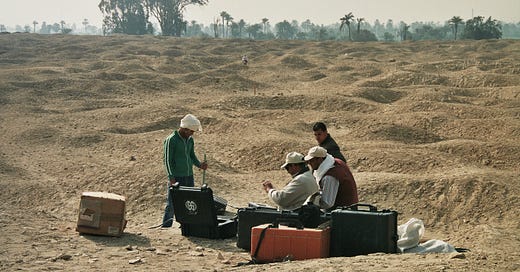The Mataha Expedition was a groundbreaking 2008 geo-archaeological survey conducted at Hawara, Egypt, the site believed to house the legendary Egyptian Labyrinth—a colossal structure described by Herodotus, Strabo, and Pliny as surpassing even the pyramids in grandeur. The mission aimed to resolve an enduring mystery: Was the labyrinth truly destroyed, or does it still lie hidden beneath the sands?
Using Ground Penetrating Radar (GPR), the expedition, led by NRIAG (National Research Institute of Astronomy and Geophysics, Egypt) and Ghent University, uncovered compelling scientific evidence of an enormous underground structure. The findings challenged the long-held belief that the labyrinth had been completely dismantled in antiquity. Instead, a vast complex of interconnected walls and chambers was detected beneath the surface, aligning with ancient descriptions.
Despite these findings, further research and excavation have been obstructed by Egyptian authorities and a near-total blackout by mainstream archaeology and press. Compounding this, rising saline groundwater is actively eroding what remains of the labyrinth, making its preservation an urgent priority.
The Mataha Expedition’s mission is far from over. To uncover the full scale of this lost wonder and prevent its irreversible destruction, further scientific research, international awareness, and urgent conservation efforts are needed.
For those interested in the full official results and whitepapers of the Mataha Expedition, follow this link: labyrinthofegypt_com__printversion.pdf > [https://drive.google.com/file/d/1YqntaYOhvSWA7fd3jFYToPqx34odntjB/view]




